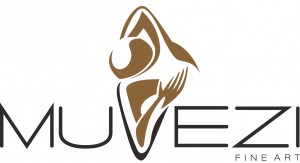Frequently Asked Questions
Where is Zimbabwe?
Zimbabwe (formerly Rhodesia) is a country located in the southeastern part of Africa. The Shona language translation of Zimbabwe is “great stone house”. “Zimbabwe’s current economic and food crisis, described by some observers as the country’s worst humanitarian crisis since independence, has been attributed, in varying degrees, to government economic mismanagement, government prohibitions on relief efforts from foreign NGOs (non-governmental organizations), a drought affecting the entire region, and the HIV/AIDS epidemic.” (wikipedia.com)
Inflation at mid-2008 is incalculable and accelerating. The government now prints billion dollar bills with short expiry dates imprinted directly on the bill. The total economic collapse has resulted in millions of Zimbabweans walking out of the country.
Who are the Shona people?
The Shona people are a group of clans or tribes who live in Zimbabwe and southern Mozambique. They number approximately thirteen million. (wikipedia.com)
What types of stone are used in Shona sculptures?
Zimbabwe is rich in diverse mineral deposits of volcanic rock. Muvezi artists sculpt in many different types of stone, but the most common are verdite, fruit serpentine, leopard rock, cobalt stone and opal decorative. Each piece is completely unique because of the variations in veining, coloration, frequency, etc.
How many Shona artists work for Muvezi?
Zimbabwe is home to about 3000 Shona sculptors. Muvezi works with about 200 of the most talented artists, and has created systems that not only provides stable employment, but also encourages apprenticeship and the continuation of this treasured craft.
Do the artists use only hand tools or other methods for carving?
Shona sculpting is a traditional art form whereby the artists use hand tools—typically chisels and hammers—to mold and shape forms and textures. Creative expression is also evident in their ability to formulate carving tools from scrap metal. Muvezi has also introduced an innovative recycling program that supplies some artists with used dental bits. Such power tools increase the efficiency and detailing of artists who carve realistic busts, etc.
How is the high gloss achieved in some sculptures?
Traditionally, artists rubbed sand from riverbeds on their finished pieces to smooth and polish, then polished the sculptures with plant or vegetable oil. Sandpaper has since replaced the natural sanding process and the sculptures are now fired and waxed with carnuba or beeswax. Artists can achieve striking contrasts and drama in their work by leaving portions of the stone rugged and raw, and others polished.
How do you determine the price of the sculptures?
Muvezi supports fair trade and is committed to rewarding their artists with reasonable compensation for their masterpieces. Several factors affect the price of a statue, including the experience and level of craftsmanship of the artist, the type of stone used (rare stones are innately more valuable than others) and the size and hardness of the stone, which affects the amount of time taken to create a sculpture.
How can you guarantee that each sculpture is an original?
Every piece that Muvezi buys and sells has been hand-crafted in Zimbabwe. Even when sculptures appear similar in nature, no two will ever be identical because of stone and color variations, craftsmanship, finishing processes, etc. Each one is a guaranteed one-of-a-kind art piece.

